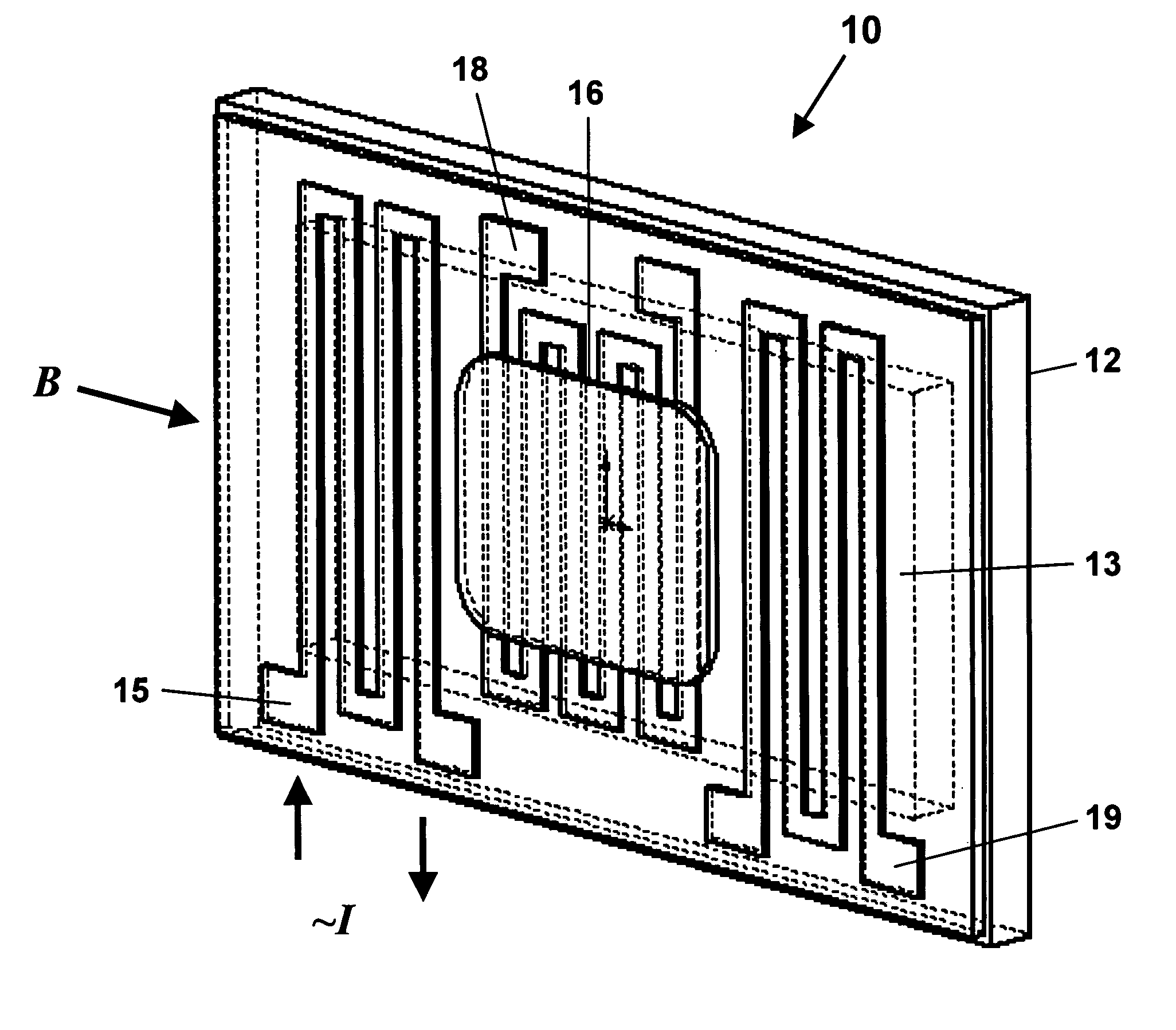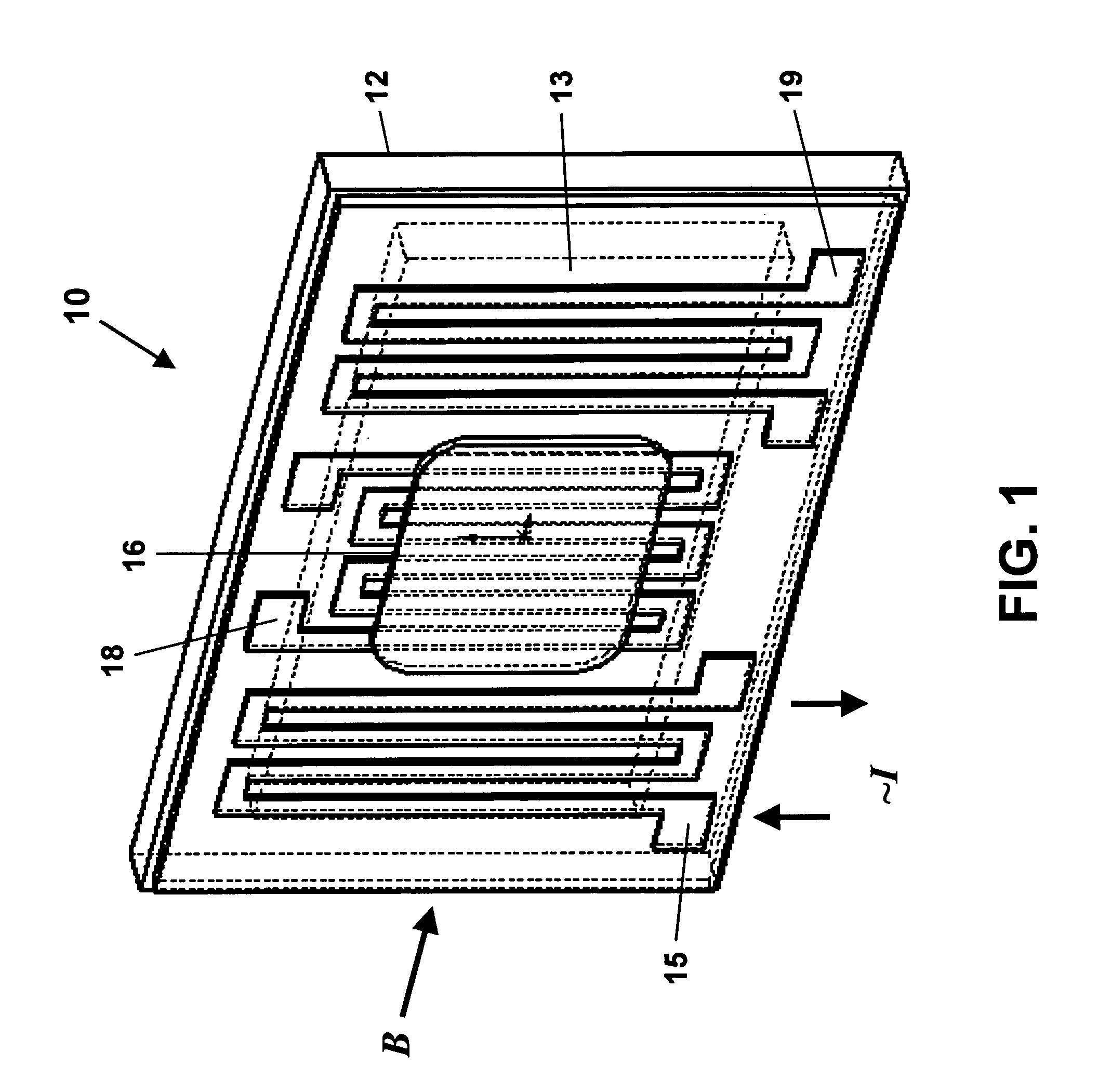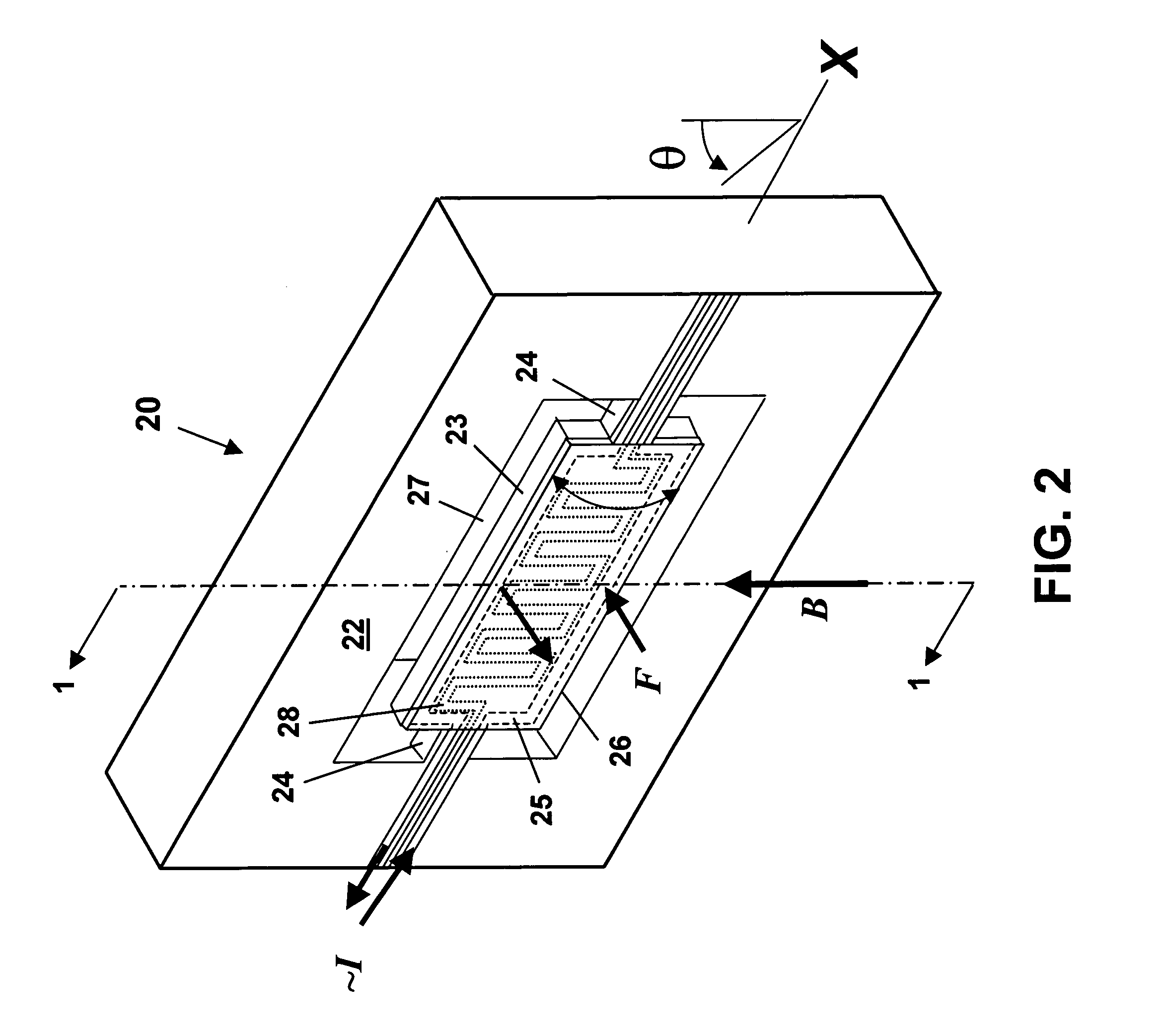Mass-sensitive chemical preconcentrator
a mass-sensitive, chemical technology, applied in the field of microanalytical systems, can solve the problems of wasting precious time collecting excess sample material, affecting the detection accuracy of chemical preconcentrators, etc., to achieve rapid collection and desorption, reduce analysis time, and reduce the effect of time-consuming
- Summary
- Abstract
- Description
- Claims
- Application Information
AI Technical Summary
Benefits of technology
Problems solved by technology
Method used
Image
Examples
Embodiment Construction
[0019]The capability to weigh a sample as it accumulates is made possible by the recent development of microfabricated acoustic devices. These acoustic devices have a number of applications, including frequency filtering, oscillator control, signal processing, and as mass and load sensors. When configured as a microbalance, these acoustic devices can be used as gas and vapor chemical sensors. When used as chemical sensors, the acoustic microbalance combines a chemically sensitive interface, which sorbs chemical species (i.e., analytes) from the environment, with an acoustic-based physical transducer, that provides an electrical output proportional to the amount of sorbed species. In particular, an acoustic microbalance relies on detecting the change in the acoustic behavior of the device (i.e., change in a mechanical wave propagation or structural vibration) due to the sorbed sample. Commonly used acoustic microbalances for chemical sensing include surface acoustic wave (SAW) device...
PUM
| Property | Measurement | Unit |
|---|---|---|
| temperature | aaaaa | aaaaa |
| resonant frequency | aaaaa | aaaaa |
| thickness | aaaaa | aaaaa |
Abstract
Description
Claims
Application Information
 Login to View More
Login to View More - R&D
- Intellectual Property
- Life Sciences
- Materials
- Tech Scout
- Unparalleled Data Quality
- Higher Quality Content
- 60% Fewer Hallucinations
Browse by: Latest US Patents, China's latest patents, Technical Efficacy Thesaurus, Application Domain, Technology Topic, Popular Technical Reports.
© 2025 PatSnap. All rights reserved.Legal|Privacy policy|Modern Slavery Act Transparency Statement|Sitemap|About US| Contact US: help@patsnap.com



